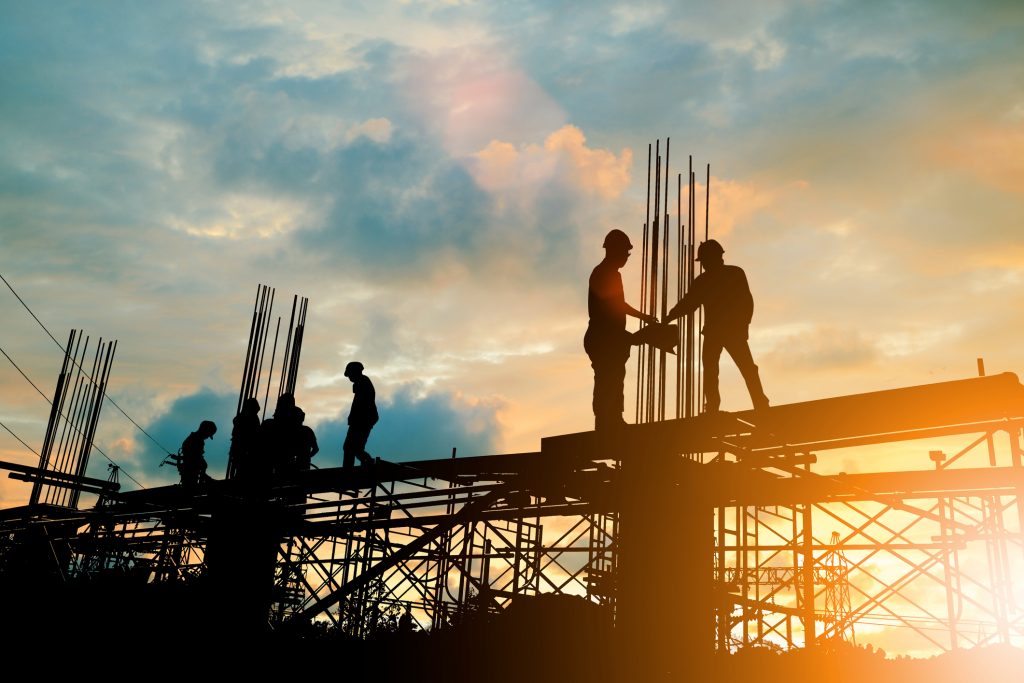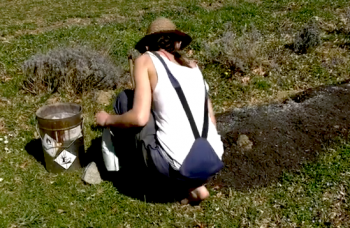Circularity in the building sector: What to learn from Apollo 13 and The Truman Show

Giving materials a passport, designing buildings as temporary aggregates, and making companies responsible for their products. What we can learn from a European project, Apollo 13 and The Truman Show, to limit the environmental footprint of the construction industry?
You might have watched “The Truman Show”, been excited by space missions, and replaced your bed light without noticing it, but the movie with Jim Carrey, Apollo 13, and lightbulbs all have something in common with circularity.
When on April 11, 1970, one of the oxygen tanks of the NASA spaceship exploded, its crew suddenly realized that they were in a “closed system”, recall Thomas Rau and Sabine Oberhuber in their book “Material matters”. Their problem had to be solved using the sole resources available on board. A closed system was also the one where the twice Golden Globe-winning American actor was held captive in Peter Weir’s movie: a real-life sized TV studio, big enough to put him under the spell of infinity, until the day he bumped into its walls. Humanity lived with the illusion of unlimited resources and then hit the limits of its closed system too. And like the astronauts of Apollo 13, it now has to admit: “Houston, we have a problem.”
In the EU, the construction industry uses 50% of the extracted materials, around 30%of available water, and 40% of available energy. “Since we can only use what we have on Earth, everything is worthful. As for art, where we have limited editions of Picassos and Rembrandts, materials are artworks of Planet Earth. Once they are over, they will be so forever,” says Rau. “The real challenge is a change of mindset: we have to decouple economic growth from the use of natural resources”. It is exactly the opposite of what the world’s major lightbulb manufacturers did for decades. United in 1924 in the so-called “Phoebus cartel”, they secretly agreed to limit the durability of their products to push people to buy more and more regularly. They basically grew richer by producing some 500 million unnecessary lightbulbs.
“Circularity means changing the system,” says Rau, with his wife Sabine Rau cofounder of Turntoo, a consulting company specializing in accelerating circular processes. “Amsterdam’s airport needed an effective and durable lightning system, so we called Philips and told them: ‘All we need is light. From the electricity bill to repair works and bulb replacements, everything must be included in what we will pay you for. The result was that, to maximize their profits, they delivered a system capable of running 24/7 for 15 years, and which consumed over one-third less than the traditional ones.” Technical partner of Houseful, Turntoo had basically invented a revolutionary business model, capable of matching the interests of the environment with those of the service providers. “By giving them the financial responsibility for the performance and durability of their merchandise, we incentivize them to reduce the use of whatever resource and to create longer lasting products.”
“If consuming less is part of the equation, the finitude of Planet Earth should also remind us of the urgency of reusing materials”, says Rau. “Everything is temporary, only its consequences are permanent. This is why buildings must be considered just as temporary aggregates, responding to needs, set to change or disappear.” To avoid constructions turning into “materials cemeteries”, from the design phase, we have to think of their “afterlife” and conceive them as “banks of materials”, to be reused for other purposes. This philosophy inspired the Triodos Bank headquarters in the Dutch city of Zeist: commissioned to Rau Architects in 2012, it is the first “100% demountable” office building in the world. “It’s fully made of wood and glass and holds together with screws, so all of its components can be disassembled and reused. Its structure can change according to evolving needs: the same elements can be taken apart as Lego blocks, and used for smaller buildings,” says Oberhuber.
To foster such a circular process, it is crucial to gather a huge amount of information. “Cities are often a white canvas for us,” says Licinio Alfaro, head of the Sustainability Department for ITeC, the Catalonia Institute of Construction Technology. “We ignore almost everything of their building stock, while we should know where their materials come from, how they have been produced, etc. To this extent, digitalization is crucial, but traditional 3D models are not enough.” This is why ITeC developed several dedicated software programs to optimize the collection and access this whole set of information. “We start from what is technically known as a BIM model. We then upload into it further details on the circularity of each material, the amount of water and energy used to produce it, and so on,” says Tommaso Giomi, architect and researcher in the sustainable construction department. This kind of information is provided by a database in which more than “a million elements, from windows to bricks”, are now registered, explains his colleague and building engineer, Jose Lucas Masero. “For each of them, it provides information on their environmental impact and recycled content, but also on the workforce and machinery needed to install and disassemble them.”
The goal of this process is to know “who the materials are,” says Rau. “Since waste is materials without identity, the first step to avoid such waste is to give them a documented and registered identity.” According to this principle, TurnToo started implementing the “Material passport” in the construction sector about ten years ago. “But then we realized that to make this knowledge available for the future, we would also need a database where to register all these materials for reuse,” says Oberhuber. The following step was “Madaster”, a cadaster for materials. Now operational in the Netherlands, Belgium, and 6 more EU countries, it is a “digital library, where all materials are registered through material passports.” “It discloses to everybody not only the identity and the history of each available material, but also in which buildings they are used and can be found, and what their value is today and will be in 20, 30 or 50 years,” she says.
“And it is right into Madaster that the digital models are then fed to generate the material passport. We wouldn’t be able to know the value of a building, or how its materials can be reused and repurposed in the future, without storing this kind of information.”, explains Giomi. If data as such are just numbers, adds Lucas Manero, “being carriers of information and knowledge, they can be crucial for economic players and policymakers to make their decisions consciously.” Circularity and sustainability are gaining momentum, but the ongoing war in Ukraine, and the energy crisis risk diverting our political leaders from thinking long-term. “They should remember that it’s not all about money and that we are dependent on everything which makes our life possible on Earth”, says Rau. “The most important thing is the future of present decisions,” warns Alfaro, quoting the Austrian-American author Peter Drucker. “Today we have enough information to ensure our decisions are sound in the long run.”
Article written by Diego Giuliani
(Photo Credits: I-stock)



